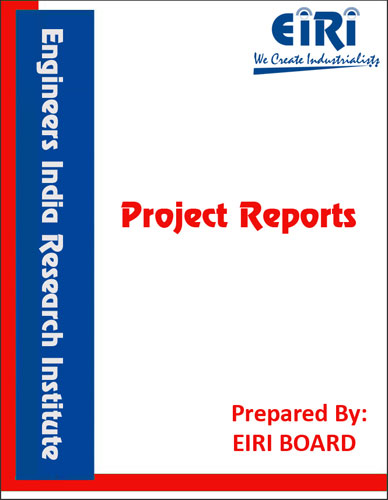The project report includes Present Market Position and Expected Future Demand, Market Size, Statistics, Trends, SWOT Analysis and Forecasts. Report provides a comprehensive analysis from industry covering detailed reporting and evaluates the position of the industry by providing insights to the SWOT analysis of the industry.
A bulk drug — also called active pharmaceutical ingredient (API) — is the chemical molecule in a pharmaceutical product (medicines we buy from the chemist) that lends the product the claimed therapeutic effect.
In other words, it is the substance responsible for the product being a medicine, penicillin to give one example. As is evident from this, there are ingredients other than the API in products sold as medicines. These inactive ingredients-excipients — may or may not change from product to product, while the bulk drug would inevitably remain the same as it is the identity of the medicine.
When the bulk drug is absent, the product is no longer a medicine and when it is changed, it is a new medicine. One may ask if the existence of the inactive ingredients signify anything to the patient. In the case of most of the existing bulk drugs, change of inactive ingredients don’t impact the curative quality of the product, although there are exceptions.
This means the drug manufacturers more or less have the liberty to “formulate” the bulk drug using excipents of his choice depending on chemical feasibility and commercial interests. The medicines in the markets in the “form” of tablets, capsules, syrups, drops, intravenous fluids etc., are therefore “formulations.” In plain language, the products we refer to as medicines are formulations (of bulk drugs) and not bulk drugs per se.
Active Pharmaceutical Ingredients (API) or bulk drugs are the principal ingredients for finished pharmaceutical products. Intermediates are the compounds from which active pharmaceutical ingredients are prepared. APIs cannot be administered directly to the patient, and other inactive substances called excipients are added to stabilise the mixture. This end product, which includes the API and the excipient, is referred to as a formulation. Formulations are the pharmaceutical products administered to patients and can take the form of tablets, capsules, syrups, ointments, creams, injectables etc.
The global API market can broadly be divided into regulated and semi regulated markets. The semi regulated markets offer low entry barriers in terms of regulatory requirements and intellectual property rights. The highly regulated markets, like the United States and Europe, have high entry barriers in terms of intellectual property rights and regulatory requirements, including facility approvals. As a result, there is a premium for quality and regulatory compliance along with relatively greater stability for both volumes and prices.
The regulatory process by which API manufacturers generally register their products for commercial sale in the U.S. and other similarly regulated countries is via the filing of a Drug Master File (DMF). DMFs are confidential documents containing information on the manufacturing facility and processes used in the manufacture, characterization, quality control, packaging and storage of an API. The DMF is reviewed for completeness by the FDA, or other similar regulatory agencies in other countries, in conjunction with applications filed by finished dosage formulation manufacturers, requesting approval to use the given API in the production of their drug products. For European markets, companies need to submit a European Drug Master File (EDMF) and, where applicable, obtain a certificate of suitability (CoS) from the European Directorate for the Quality of Medicines.
INTRODUCTION
OVERVIEW OF INDIAN PHARMACEUTICAL INDUSTRY
TREND & OUTLOOK OF BULK DRUGS INDUSTRY
MARKET SURVEY
IMPORT DATA OF BULK DRUG
GLOBAL MARKET POSITION OF BULK DRUGS
PRESENT MANUFACTURER/SUPPLIERS OF BULK DRUGS
MANUFACTURING PROCESS OF DRUGS
MANUFACTURING PROCESS
FLOW DIAGRAM OF BULK DRUG MANUFACTURING PROCESS
PROCESS FLOW DIAGRAM FOR 2-ACETYL THIOPHENE
PROCESS FLOW DIAGRAM FOR 2-ACETYL BENZO (B) THIOPHENE
PROCESS FLOW DIAGRAM FOR CAMPHOR SULFONYL CHLORIDE
MANUFACTURING PROCESS OF ETHYL 2-OXO-4-PHENYL BUTYRATE
PROCESS FLOW DIAGRAM
SWOT ANALYSIS OF INDIAN PHARMACEUTICAL INDUSTRY
PRINCIPLES OF PLANT LAYOUT
PLANT LOCATION FACTORS
EXPLANATION OF TERMS USED IN THE PROJECT REPORT
PROJECT IMPLEMENTATION SCHEDULES
PLANT LAYOUT
SUPPLIERS OF RAW MATERIALS
COMPLETE PLANT SUPPLIERS
SUPPLIERS OF PLANT AND MACHINERY
APPENDIX – A :
1. COST OF PLANT ECONOMICS
2. LAND & BUILDING
3. PLANT AND MACHINERY
4. FIXED CAPITAL INVESTMENT
5. RAW MATERIAL
6. SALARY AND WAGES
7. UTILITIES AND OVERHEADS
8. TOTAL WORKING CAPITAL
9. COST OF PRODUCTION
10. PROFITABILITY ANALYSIS
11. BREAK EVEN POINT
12. RESOURCES OF FINANCE
13. INTEREST CHART
14. DEPRECIATION CHART
15. CASH FLOW STATEMENT
16. PROJECTED BALANCE SHEET



